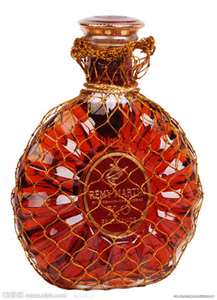From grain that can be harvested and stored comes continuous production of whiskey, vodka, and gin. From countries with year-round favorable weather comes production of rum from sugarcane and tequila from agave. Brandy, which is distilled wine, depends on the seasons. Grapes or fruit must ripen in the sun, be gathered at the optimum moment, and made into wine before their time passes.
- Grape Brandy is distilled from fermented grape juice and aged in wooden casks. This colors and mellows it and the wood adds new aromas and flavors.
- Pomace Brandy is made from pressed pulp, skins, and stems after grapes have been crushed and juice extracted for wine. Such brandies are minimally aged, usually not in wood. They are often quite raw but can offer a fresh, fruity aroma of the type of grape used.
- Fruit Brandy refers to brandy distilled from fermented fruits other than grapes such as apples, peaches, pears, apricots, plums, and cherries. Berries such as elderberries, raspberries, mulberries, and blackberries usually don’t have enough sugar to produce sufficient alcohol for distilling so are first soaked in a high-proof spirit to extract their flavor and aroma.
FINE BRANDY
 Fine grape or fruit brandy begins by placing juice in a large vat at 68-77°F for five days. Natural yeast present in the distillery environment ferments sugar in the juice to an alcohol content of up to 10%. Vat contents are then transferred to a copper pot still and distilled once to an alcohol level of about 28%, then distilled again to around 72% alcohol.
Fine grape or fruit brandy begins by placing juice in a large vat at 68-77°F for five days. Natural yeast present in the distillery environment ferments sugar in the juice to an alcohol content of up to 10%. Vat contents are then transferred to a copper pot still and distilled once to an alcohol level of about 28%, then distilled again to around 72% alcohol.
The distillate is then placed in oak casks and allowed to age. Some brandy can be ready for bottling after two years, some after six years, and some is allowed to age for up to 50 years or more. Brandy loses about 1% of its alcohol content (the “angels’ share”) per year.
Fine brandies are usually blended from many different barrels from a variety of different years to achieve a consistent taste. Distilled water is added to reduce alcohol content to 40%, along with a small amount of sugar to simulate age in young brandies and caramel to obtain a uniform color. The resulting brandy can cost anywhere from $25 to $500 or more per bottle depending on its age.
MASS-PRODUCED BRANDY
This product as very little in common with fine brandy. It is usually made from table grapes instead of grapes used for fine wine and is distilled in a continuous column still rather than a small batch pot still. The resulting product is colorless, odorless, and tasteless with an alcohol content of about 96.5%. It could be used to fuel automobiles. It could be diluted and called vodka or flavored with juniper berries and called gin. After aging it in oak casks to give it some flavor and aroma, blending it to a certain level of consistency and diluting it to 40% alcohol, it is bottled as brandy.
LABELING
- A.C.: aged two years in wood.
- V.S.: “Very Special” or 3-star, aged at least three years in wood.
- V.S.O.P.: “Very Superior Old Pale” or 5-star, aged at least five years in wood.
- X.O.: “Extra Old,” aged at least six years.
- Vintage: stored in the cask until it is bottled with the label showing the vintage date.
- Hors d’age: too old to determine the age, usually more than ten years, very high quality.
_______________
“Claret is the liquor for boys; port for men; but he who aspires to be a hero must drink brandy.” — Samuel Johnson
